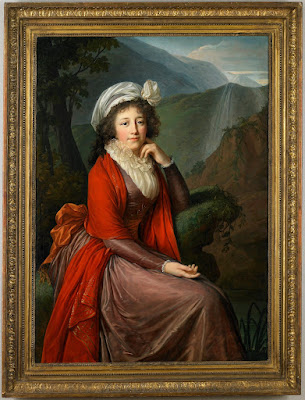 |
| Anonymous Italian Artist St Jerome in the Desert ca. 1700 oil on canvas Minneapolis Institute of Art |
 |
| Nicolas de Largillière Catherine Coustard, Marquise de Castelnau with her son Léonor ca. 1700 oil on canvas Minneapolis Institute of Art |
 |
| Nicolas de Largillière Portrait of a Nobleman ca. 1710 oil on canvas Gemäldegalerie, Dresden |
 |
| Bernard Lens after Peter Paul Rubens Victorious Hero concluding Peace (Personification of Peace with Ceres, Minerva and Mars) 1720 watercolor and gouache miniature on vellum Yale Center for British Art |
 |
| Giuseppe Ghislandi Portrait of a Young Man ca. 1730 oil on canvas National Gallery of Art, Washington DC |
 |
| Pierre-Charles Trémolières Personification of Comedy ca. 1736 oil on canvas (sketch) Metropolitan Museum of Art, New York |
 |
| Jean-Étienne Liotard Moritz, Count of Saxony, Marshal of France ca. 1746-49 pastel on vellum Gemäldegalerie, Dresden |
 |
| Anton Raphael Mengs Elector Friedrich August III of Saxony as an Infant 1751 pastel Gemäldegalerie, Dresden |
 |
| Joseph-Marie Vien Sweet Melancholy 1756 oil on canvas Cleveland Museum of Art, Ohio |
 |
| Giuseppe Baldrighi Family of Filippo I, Duke of Parma and Piacenza ca. 1757 oil on canvas Galleria Nazionale di Parma |
 |
| Nathaniel Dance-Holland Conversation Piece (British Grand Tourists in Rome) ca. 1760 oil on canvas Yale Center for British Art |
 |
| Anton Raphael Mengs Adoration of the Shepherds ca. 1764-65 oil on canvas National Gallery of Art, Washington DC |
 |
| Anonymous French Artist Portrait of a Young Man ca. 1770 oil on canvas National Gallery of Art, Washington DC |
 |
| Gilbert Stuart Portrait of Sir Joshua Reynolds 1784 oil on canvas National Gallery of Art, Washington DC |
 |
| Thomas Lawrence The Children of Lord George Cavendish 1790 oil on canvas Städel Museum, Frankfurt |
 |
| Elisabeth Vigée Le Brun Portrait of Countess Maria Theresia Bucquoi 1793 oil on canvas Minneapolis Institute of Art |
"Given the multitude of written texts and vehement declarations, it is impossible to separate what was rational from what such unprecedented events had kindled in the imagination. What stands out is the woefulness that could hardly be assuaged by the certainty of living in a momentous time. Two contradictory attitudes are discernible, characteristically oscillating from one to the other: on one side fate is invoked, usually accompanied by feelings of gross injustice; on the other, providence, urging repentance after punishment. The first is generally present in the lamenti and imprecations that can be termed popular; the second appears among clerics with a noteworthy difference determined by whether they continued to believe or lost faith in Rome's fundamental vocation. . . . [The Vatican diplomat and historian Francesco] Guicciardini died of shame. He would have liked to transcend his burning anguish through a moral or religious exaltation that might have distanced him from his despair. But he could not, nor did he even try, observing that it would be necessary to shed human weakness, which is not possible. "Just as I wish you to be in such a state of perfection, so I confess to being alien to it."
– André Chastel, The Sack of Rome, 1527, translated by Beth Archer, 1983 (expanded from the A.W. Mellon Lectures in the Fine Arts, 1977, and published by Princeton University Press and the National Gallery of Art, Washington, D.C.)